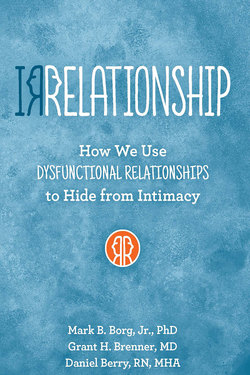Читать книгу IRRELATIONSHIP: How we use Dysfunctional Relationships to Hide from Intimacy - Mark B. Borg - Страница 11
На сайте Литреса книга снята с продажи.
ОглавлениеUsing This Book Using This Book
As you may have already noticed, the words “Performer” and “Audience” have been capitalized throughout the text. This has been done purposely to maintain clarity in analyzing the irrelationship dynamic.
The book has five sections that build on one another, so they should be read in order to prevent confusion.
• Part One: Irrelationship on Stage—Your Song-and-Dance Routine introduces the basic anatomy of irrelationship and helps you build acceptance and patience with yourself as you explore the ways you undermine your chances at love and intimacy.
• Part Two: Getting to Know You—Spotlight on the Performer and the Audience profiles the key players of irrelationship. It explores how anxiety drives the players into their song-and-dance routine and reveals the isolation and frustration of trying to maintain safety inside a dysfunctional system.
• Part Three: Backstage—The Inner Workings of Irrelationship delves into the core reasons irrelationship developed in the first place and discusses familiar pitfalls that result from staying stuck in the irrelationship pattern for long periods.
• Part Four: Raising the Curtain on Recovery—From Irrelationship to Real Relationship introduces the DREAM Sequence of recovery, outlining the five-step process of recognizing and escaping irrelationship.
• Part Five: Encore—Cracked Open for Love offers guidance and support for staying on track in recovery.
Each chapter is followed by a series of exercises called Toward Positive Change. These exercises include reflection on your own experience and questions designed to help you apply the ideas in the chapter.
Use a blank journal for writing your reflections and answering the questions. Taking quiet, unhurried time for the work is vital for using the material effectively. Your written answers and reflections are useful for tracking changes in your thinking and behavior.
Create a list of the parts of the book, citing the page number, that resonate with your experience and irrelationship storyline. You’ll find validation, relief, and even laughter as you identify with the people and stories presented. Identification of this type is a powerful mechanism for healing, so savor and reflect on it. Whenever you have doubts about the value and direction of your work, revisit earlier parts of your journal to reorient yourself about where you’ve been and where you’re going.
Welcome to recovery! Get ready for a leap into a process of learning how to live a life of fulfillment and true connection with others.
